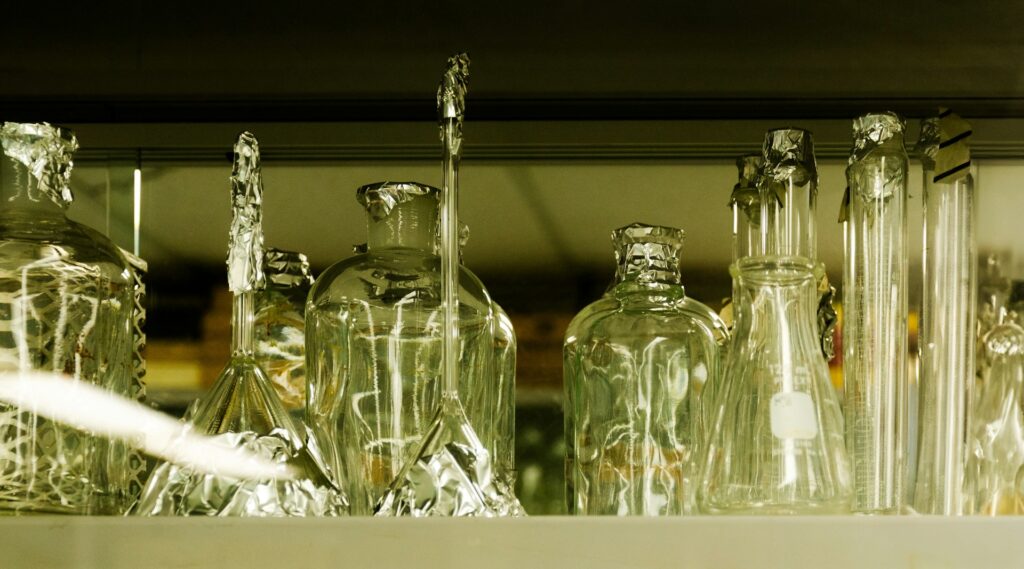Led by Dr. Weijun Deng, researchers have developed an artificial tongue capable of detecting the heat levels of spicy foods using milk proteins as its key sensing ingredient. The study, introduces a milk-based gel sensor that can mimic the human tongue’s response to compounds such as capsaicin, the chemical responsible for chili’s characteristic burn. The device represents a new intersection of biomaterials science and food engineering, aiming to provide an accurate, safe, and objective way to measure the spiciness of food without relying on human taste testers.
Deng, W., Yang, J., Wen, H., & Hu, J. (2025). A Soft and Flexible Artificial Tongue for Pungency Perception. ACS Sensors. https://doi.org/10.1021/acssensors.5c01329
The principle behind the artificial tongue is based on the chemistry of milk. Milk contains casein, a protein known to bind with capsaicin molecules. This binding process helps neutralize the burning sensation caused by spicy foods. Building on that natural mechanism, Dr. Deng and his team integrated skim milk powder, which contains casein, into an electrochemical hydrogel made from acrylic acid and choline chloride. The mixture was then exposed to ultraviolet light, forming a soft, flexible, and tongue-shaped film that could conduct an electrical current.
When capsaicin or other pungent compounds came into contact with the film, the electrical current dropped within approximately ten seconds. This change in current served as a measurable signal of chemical interaction between the casein and the compound, effectively translating the “spicy” sensation into quantifiable data. The artificial tongue was tested on a range of capsaicin concentrations, including levels too low for human detection and others above the oral pain threshold. It also responded to pungent molecules from common spices such as black pepper, garlic, ginger, and horseradish.
To validate the sensor’s performance, the team compared its readings with human taste panels. They tested eight varieties of peppers and eight spicy food products, including several types of hot sauce. The results showed that the artificial tongue’s readings aligned closely with the human testers’ spiciness ratings.
From an engineering standpoint, the artificial tongue presents several interesting aspects in materials design and sensory systems. It combines biological inspiration with modern materials science to create a sensor that behaves in a biologically meaningful way. The use of casein not only provides a biologically relevant mechanism for binding pungent compounds but also introduces a sustainable, food-grade material into the sensor’s structure. The flexible gel form makes it adaptable to irregular surfaces and compatible with wearable or robotic systems.
Dr. Weijun Deng from American Chemical Society stated,
“Our flexible artificial tongue holds tremendous potential in spicy sensation estimation for portable taste-monitoring devices, movable humanoid robots, or patients with sensory impairments like ageusia, for example”.
The device’s response time of around ten seconds offers significant practical value. Traditional methods of measuring spiciness, such as chromatography or spectroscopic analysis, require extensive preparation and laboratory settings. By contrast, the artificial tongue allows for rapid, on-site measurement, making it suitable for portable testing devices. The team envisions potential applications in food manufacturing, culinary robotics, and even clinical use for patients with sensory impairments
The artificial tongue could transform the way food spiciness is measured in the industry. Food producers often depend on human testers to evaluate the intensity of spicy ingredients, which can lead to variability and fatigue. This sensor could offer a more objective, consistent standard. It could be used by hot sauce manufacturers to verify the pungency levels of their products or by spice suppliers to ensure batch consistency.
Beyond the food industry, this innovation also holds promise for robotics and human; machine interfaces. Engineers have long sought to develop sensory systems that mimic human taste and smell for use in humanoid robots. A robotic chef equipped with an artificial tongue could taste and adjust seasoning in real time. Similarly, such a device could help individuals with impaired taste perception experience a sense of flavor through digital or assistive feedback mechanisms.
Although the results are promising, several challenges remain before this technology can be widely adopted. The sensor’s selectivity between different types of pungent compounds; such as capsaicin in chili, piperine in black pepper, or allicin in garlic; still requires further refinement. In complex foods where multiple spices are present, distinguishing between sources of pungency will be necessary for accurate readings.
Durability and reusability also represent important considerations. Gel-based materials can degrade over time or under repeated exposure to moisture and heat. For industrial applications, engineers will need to optimize the material’s lifespan and ensure stable calibration over multiple uses.
Integration with electronic systems will be another key step. The current design operates as a standalone laboratory prototype. To move toward practical applications, future versions could incorporate miniaturized electronics, wireless communication, or smartphone connectivity to create handheld spiciness meters.
Researchers also emphasize that biocompatibility and safety testing are essential for any device that might come into direct contact with food or human users. Scaling the device for commercial use would require food-grade certification and adherence to manufacturing standards.
The artificial tongue offers a bridge between sensory science and industrial process control. For food engineers, it introduces the possibility of quantifying taste sensations that have historically relied on subjective judgment. Measuring spiciness objectively could streamline product development, improve quality control, and reduce dependence on time-consuming sensory panels.
In culinary contexts, such a device could become a useful tool for chefs and product developers experimenting with new spice formulations. It could help standardize flavor intensity across batches or guide the design of sauces and condiments targeted toward specific heat preferences.
From an academic and research perspective, the study also demonstrates how simple bioinspired principles; such as milk’s ability to counteract chili burn; can be translated into practical engineering solutions. It exemplifies how everyday observations can inspire technological innovation when combined with advances in materials science and electrochemistry.
Looking ahead, Dr. Deng and his colleagues plan to refine the design for real-world testing and scalability. Future research may involve creating multi-layered sensors that can detect other taste profiles such as sweetness, umami, or bitterness, effectively moving toward a complete artificial gustatory system.
In the long term, the team envisions integrating the artificial tongue into robotics, portable quality control kits, and even assistive medical devices. By blending natural biochemistry with synthetic materials, the project points toward a new generation of sensors capable of perceiving the world as humans do; through taste, touch, and chemical interaction.
The milk-based artificial tongue developed by Dr. Weijun Deng and his team represents a creative and practical approach to quantifying spiciness. By harnessing casein proteins within a conductive gel, the researchers have demonstrated that the sensations of heat and pungency can be measured objectively through changes in electrical current. While the device remains in the experimental phase, it marks a significant step toward combining biomimicry, materials engineering, and sensory technology in one system.
The research highlights a simple yet powerful idea: that the same proteins which soothe our tongues after eating spicy food can also help machines understand what “spicy” really means. Through continued refinement, this innovation could soon find its place not only in food factories and laboratories but also in the kitchens and robotics systems of the future.

Adrian graduated with a Masters Degree (1st Class Honours) in Chemical Engineering from Chester University along with Harris. His master’s research aimed to develop a standardadised clean water oxygenation transfer procedure to test bubble diffusers that are currently used in the wastewater industry commercial market. He has also undergone placments in both US and China primarely focused within the R&D department and is an associate member of the Institute of Chemical Engineers (IChemE).



